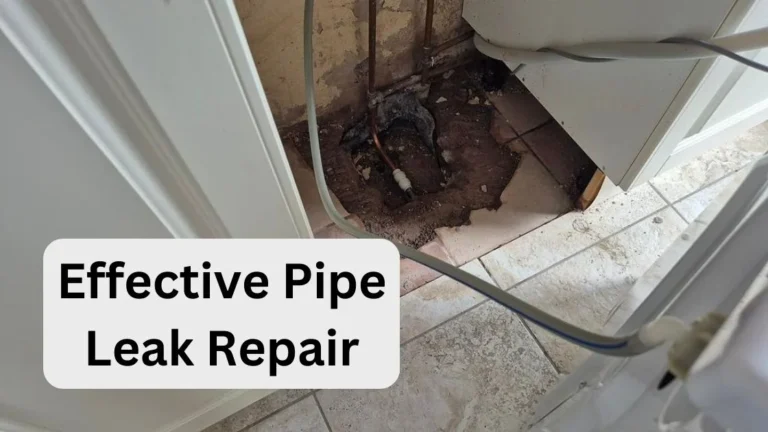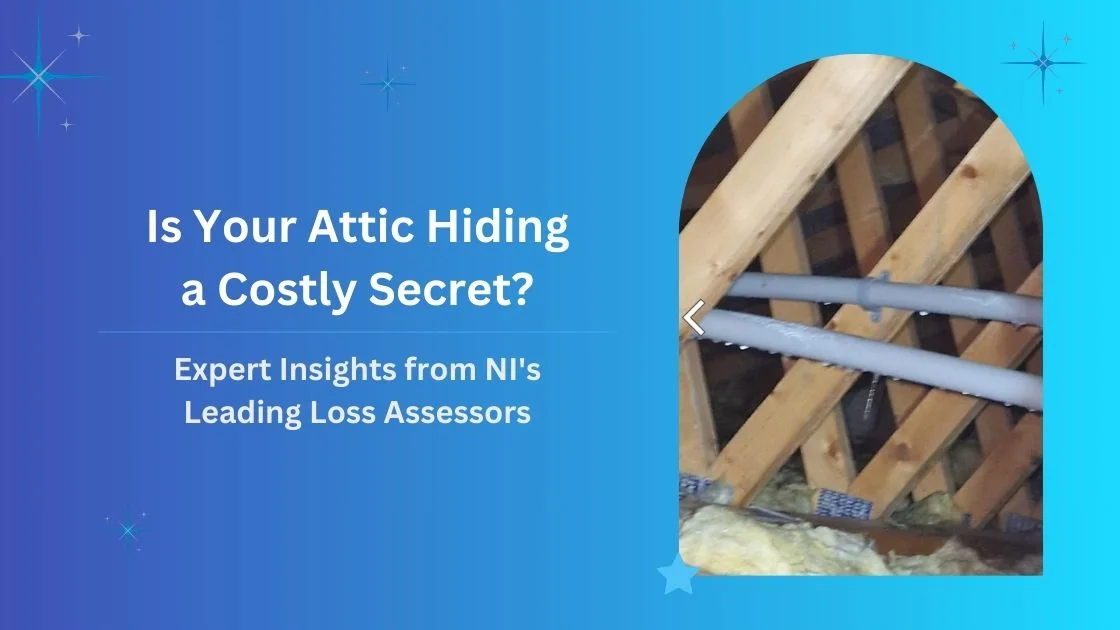Dealing with a pipe leak can be a daunting task, but understanding the basics of effective repair can save you time and money. In this article, we cover everything you need to know about fixing leaks, from identifying the problem to choosing the right repair method. Whether you’re a DIY enthusiast or prefer calling in the experts, this guide will help you tackle pipe leaks with confidence.
Key Takeaways
- Regularly inspect plumbing for signs of leaks, such as water stains and damp spots, to catch issues early.
- Use temporary solutions like plumber’s tape or epoxy putty to quickly seal leaks until permanent repairs can be made.
- Shut off the main water supply immediately to prevent further damage during a leak.
- Maintain proper water pressure and insulate pipes to reduce the likelihood of leaks caused by stress or freezing.
- Schedule regular professional leak inspections to ensure your plumbing system remains in good condition and to prevent future leaks.
Identifying Pipe Leaks
Identifying pipe leaks is essential for maintaining the integrity of a home’s plumbing system. Effective leak detection begins with a thorough visual inspection of the surroundings.
Homeowners should routinely check for visible water stains on walls or ceilings, which often indicate hidden leaks. Areas under sinks and around appliances are critical spots to inspect, as pooling water can suggest issues in waste pipes or supply lines.
Employing a moisture meter provides an invaluable tool for detecting leaks within walls, measuring moisture levels that may not be immediately visible. Furthermore, listening for dripping sounds in quiet spaces can reveal even small leaks.
Regular monitoring of plumbing connections and damp spots can facilitate early detection, preventing potentially costly damage down the line.
Common Causes of Leaks
Leaks in piping systems often arise from a combination of factors, including corrosion and wear, high water pressure, and temperature fluctuations.
Over time, materials can deteriorate, while excessive pressure and environmental changes can exacerbate vulnerabilities.
Understanding these common causes is essential for effective leak prevention and repair strategies.
Corrosion and Wear
Pipes, the veins of any plumbing system, are susceptible to corrosion and wear, which are among the leading causes of leaks.
Older pipes, particularly galvanised steel, often succumb to rust and deterioration from prolonged water exposure. Regular inspections are essential, as wear indicators like discolouration or pitting can signal impending leaks due to corrosion or degradation.
Furthermore, temperature fluctuations can exacerbate issues, causing materials like PVC to become brittle and crack. Joint failures, stemming from improper installation or wear, frequently emerge as leak hotspots, compounded by corrosion over time.
Implementing effective corrosion prevention strategies, such as protective coatings or regular maintenance, can greatly enhance the longevity of your plumbing system, fostering a sense of community through shared knowledge and proactive care.
High Water Pressure
One of the significant factors contributing to plumbing issues is high water pressure, which can strain the system beyond its designed capacity.
Normal residential water pressure ranges from 40 to 60 psi; however, pressures exceeding 80 psi can lead to severe pipe stress. This excessive pressure often results in stress fractures, particularly in older plumbing systems, where wear and tear on joints and fittings become apparent.
Seasonal changes can further compound this issue, as fluctuations in temperature cause pipes to expand and contract, increasing the likelihood of leaks.
To safeguard your plumbing, it’s essential to regularly monitor water pressure and consider installing a pressure regulator.
Temperature Fluctuations
Temperature fluctuations pose a significant risk to plumbing systems, as they can induce expansion and contraction in materials, leading to cracks or leaks.
Pipes made of PVC and copper are particularly susceptible to thermal expansion, making them vulnerable to damage.
In colder months, water trapped inside pipes can freeze, resulting in freeze damage that increases pressure and may cause pipes to burst when temperatures rise.
Moreover, rapid temperature changes, such as hot water flowing into cold pipes, can stress joints and connections, gradually leading to leaks.
To protect against these risks, it is essential to insulate pipes located in unheated areas such as basements or lofts and regularly monitor temperature extremes to implement pre-emptive measures.
Emergency Response Actions
In the event of a pipe leak, immediate action is essential to minimise damage and ensure safety.
Initially, shutting off the main water supply prevents further flooding, while addressing any electrical hazards is paramount for personal safety.
Following these steps, temporary leak containment measures can be implemented to manage the situation effectively until professional repairs are arranged. Do you know how to select a Leak Detection Specialist?
Immediate Water Shutoff
When faced with a pipe leak, the urgency of immediate action cannot be overstated, as every moment counts in preventing extensive water damage.
The initial step in your emergency procedures is to shut off the water supply. Here’s how to proceed:
- Locate the main water supply valve and turn it off to stop the flow of water.
- Use the nearest isolation valve, often found under sinks, for a quicker response.
- If the leak is near electrical sockets, turn off the electricity at the mains to ensure safety.
Once the water supply is secured, turn on all taps connected to the affected pipe to drain any residual water and relieve pressure, while keeping a towel or bucket handy to catch any remaining drips.
Safety Precautions First
Addressing a pipe leak requires not only swift action but also a commitment to safety.
Begin by turning off the main water supply to prevent further damage, locating the stopcock or isolation valve nearest to the leak. If the leak is near electrical sources, ensure safety by switching off power at the fuse box.
Employ leak detection methods to assess the extent of the issue. Drain any remaining water by opening all taps connected to the leak.
Clear the area of furniture and belongings to minimise damage, using towels or buckets to catch drips temporarily.
Document the situation with photographs for insurance claims, noting the date and extent of the leak, and always wear appropriate safety gear to protect yourself during this process.
Temporary Leak Containment
Effective temporary leak containment is essential during an emergency, as it can greatly minimise water damage and facilitate easier repairs. Quick action is crucial; here are key steps to take into account:
- Turn Off the Main Water Supply: This prevents further water damage when leak detection occurs.
- Employ Sealant Options: Use plumber’s tape or epoxy putty to wrap the leak, creating a makeshift watertight seal until permanent repairs can be completed.
- Manage Dripping Water: Make use of buckets and towels to catch any residual water, protecting surrounding areas from additional damage.
Additionally, remember to document the leak with photographs for insurance purposes.
Tools and Materials Required
To successfully tackle pipe leak repairs, assembling the right tools and materials is fundamental. A pipe cutter allows for the removal of damaged sections, while an adjustable spanner is essential for tightening connections.
A utility knife is handy for cutting different repair materials. For sealing leaks, epoxy putty creates durable seals, and self-fusing silicone tape is effective for wrapping around leaks.
Rubber sleeves, secured with clamps, offer temporary fixes, while plumber’s tape guarantees secure threaded connections. Slip couplings provide a seamless method to connect pipe ends without soldering.
Nitrile gloves protect your hands, and a torch is critical for inspecting dark areas where leaks might be hiding. Being well-prepared fosters confidence and efficiency in repairs.
Temporary Repair Solutions
After ensuring you have the appropriate tools and materials at your disposal, attention turns to implementing temporary repair solutions that can mitigate water damage and prevent further complications.
These methods provide immediate assistance and create a sense of security until a permanent fix can be arranged. Consider the following options:
- Plumber’s Tape: Use this to seal small leaks swiftly, offering a short-term solution.
- Self-Fusing Silicone Tape: Wrap it tightly around the leak, ideally in 8-10 layers, for effective sealing.
- Epoxy Putty or Rubber Sleeves: Mould the putty around cracks or apply rubber sleeves with clamps for a temporary barrier.
Additionally, practising drip management with buckets or towels can help contain water damage during this process.
Permanent Repair Techniques
For lasting solutions to pipe leaks, implementing permanent repair techniques is essential. Several repair methods can effectively address the type of pipe materials in use, ensuring durability and reliability. Here’s a concise overview of common techniques:
| Repair Method | Description |
|---|---|
| Slip Coupling | Cut out damaged sections and install a fitting. |
| Compression Fittings | Easier installation without soldering required. |
| Epoxy Putty | Mouldable around leaks for a strong, quick bond. |
| Repiping | Replacing extensive damage for long-term solutions. |
| Professional Checks | Regular inspections to preemptively address issues. Read Our Step-by-Step Pipe Leak Repair Guide. |
Maintenance and Prevention Tips
While pipe leaks can be a significant inconvenience, adopting proactive maintenance and prevention strategies can greatly reduce the risk of their occurrence.
Implementing the following tips will help ensure your plumbing system remains leak-free:
- Conduct Seasonal Checks: Inspect plumbing systems at least once a year for wear and tear, focusing on joints and connections for leaks or corrosion.
- Maintain Proper Water Pressure: Keep water pressure within the recommended range of 2.75-4.14 bar to minimise stress on pipes.
- Invest in Pipe Insulation: Insulate pipes in unheated areas like basements and crawl spaces to prevent freezing and potential bursting during cold weather.
Got a Leak? Don’t Freak—Expert Help Is Just a Call Away!
Don’t let a small leak wreak havoc in your home. Reach out to our leak specialists today and get peace of mind with our swift, professional service.



